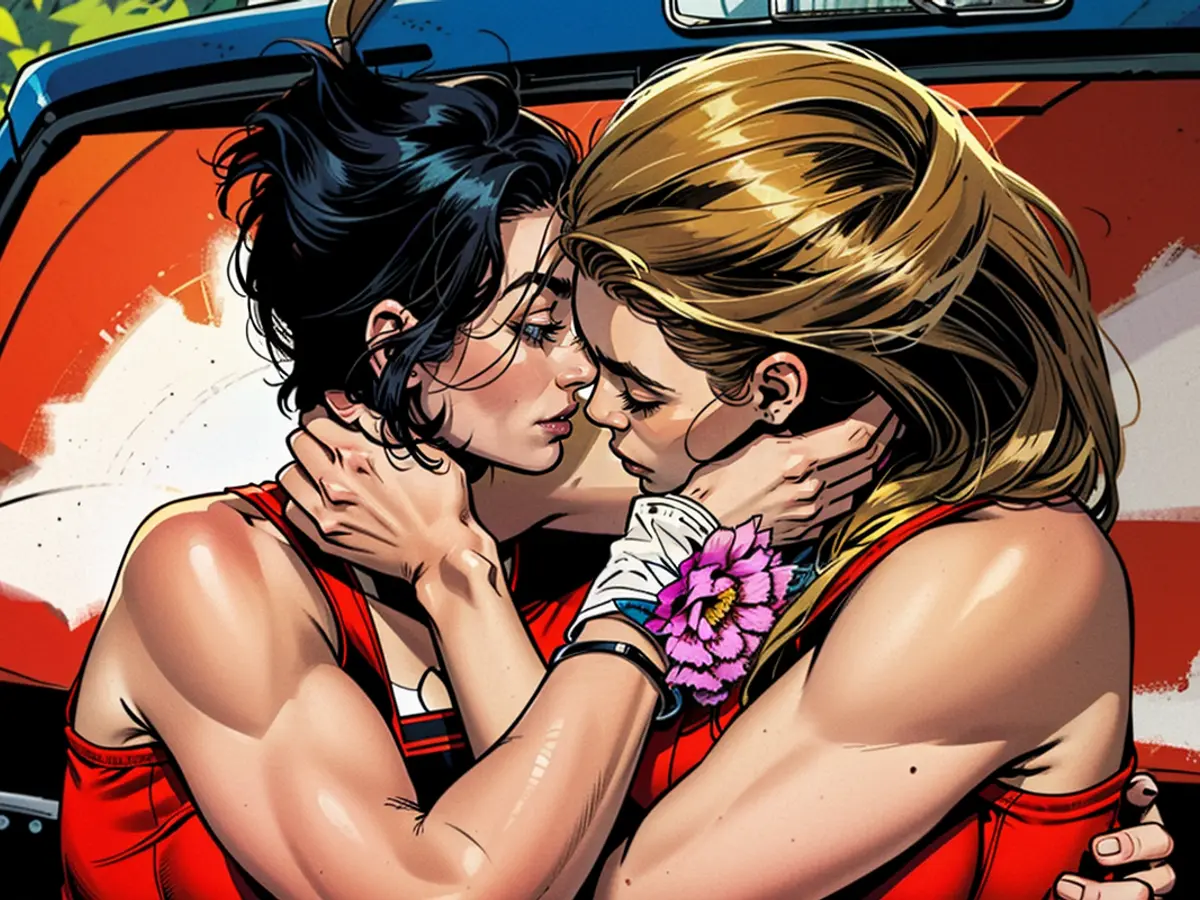‘Is this too far?’: How the queer film ‘But I’m a Cheerleader’ broke boundaries in 1999
The movie embraced the absurd from the very beginning, as Megan (Lyonne) endures an overtly sloppy make-out session with her jock boyfriend while tightly cropped scenes of cheerleaders’ bodies flash through her brain. But in her feature-length debut, director Jamie Babbit’s vision soon crystallizes as Megan’s family and friends stage an intervention to pluck her from her picture-perfect, prudish suburban life into the plasticky, pink-and-blue world of True Directions, where its founder, Mary (Cathy Moriarty) tries to recalibrate teenagers’ sexualities through restrictive, Bible-approved gender roles.
But no amount of baby doll rearing, wood chopping or simulated heteronormative sex can hide everyone’s real desires, including Mary’s own daisy duke-wearing son, Rock (Eddie Cibrian) and the group’s “ex-gay” lead, Mike (the matchless RuPaul), who sports a “Straight is Great” shirt and a whistle for any delinquent behavior. (Serious offenses mean a week in solitary confinement: a pink picket-fence doghouse.)
Long before “Barbie” turned its plastic world into a summer blockbuster, Babbit was looking at many of the same references as Trojan horse for ideas around sex and gender. She’d grown up “obsessed” with Barbies, pretending they all lived in New York City and dated each other, she recalled in a video call with CNN. “It was my weird femme fantasy of what my grown-up life was going to be.”
“I wanted True Directions to look like the Barbie Dreamhouse,” she continued. “And the more ‘straight’ the characters become in ‘gay rehab,’” the more “plastic and artificial” they become.
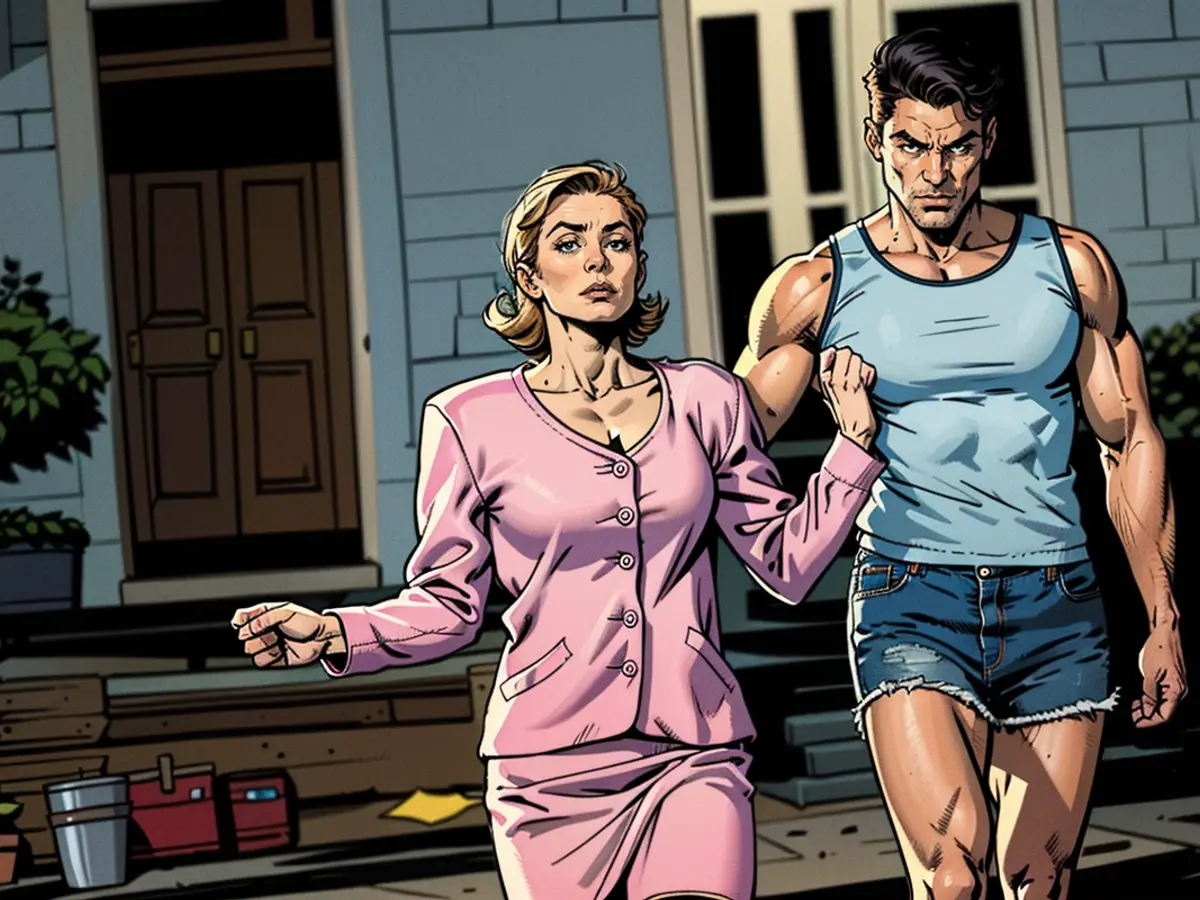

For a small crew designing nearly everything by hand, the visuals of “Cheerleader” punched far above their weight, from the pink-painted Victorian home that housed True Directions to the shimmering bubblegum pink dresses and neon blue suits worn by the group at their “straight” graduation. Over the course of the film, which was written by Brian Wayne Peterson, the color palette shifts from neutral to color-blocked to rainbow, as Megan enters new stages of her journey and embraces her sexuality.

Taking cues from the retro fantasy of Tim Burton’s “Edward Scissorhands” and the outlandish camp of John Waters, Babbit worked with costume designer Alix Friedberg and production designer Rachel Kamerman, two other industry upstarts, to bring the visuals to life. The movie cost $1 million to make and only made around $60,000 at four theaters during its opening weekend, though it eventually accrued around $2.6 million at the box office. In 2005, it got the musical treatment in New York, with a stage adaptation that has since had three runs in London. It’s also had the Phoebe Bridgers stamp of approval in her 2022 music video with MUNA, “Silk Chiffon,” which pays homage to the film.
“I just love the cult following that it’s had,” Friedberg said in the call with Babbit and Kamerman. “I think we all knew we were making something really special. It was the first movie I ever designed, and it was so hyper realistic and fun and colorful, and we got to build all kinds of fun things and play.”
At the time, she added, “people didn’t understand how great it was.”
Babbit recalls an early thumbs-up review by Rogert Ebert, which they Xeroxed and handed out at screenings. But scores of less-flattering reviews followed — including CNN’s own caustic take — with many critics seeming to take offense at the satirical handling of a story about conversion practices.
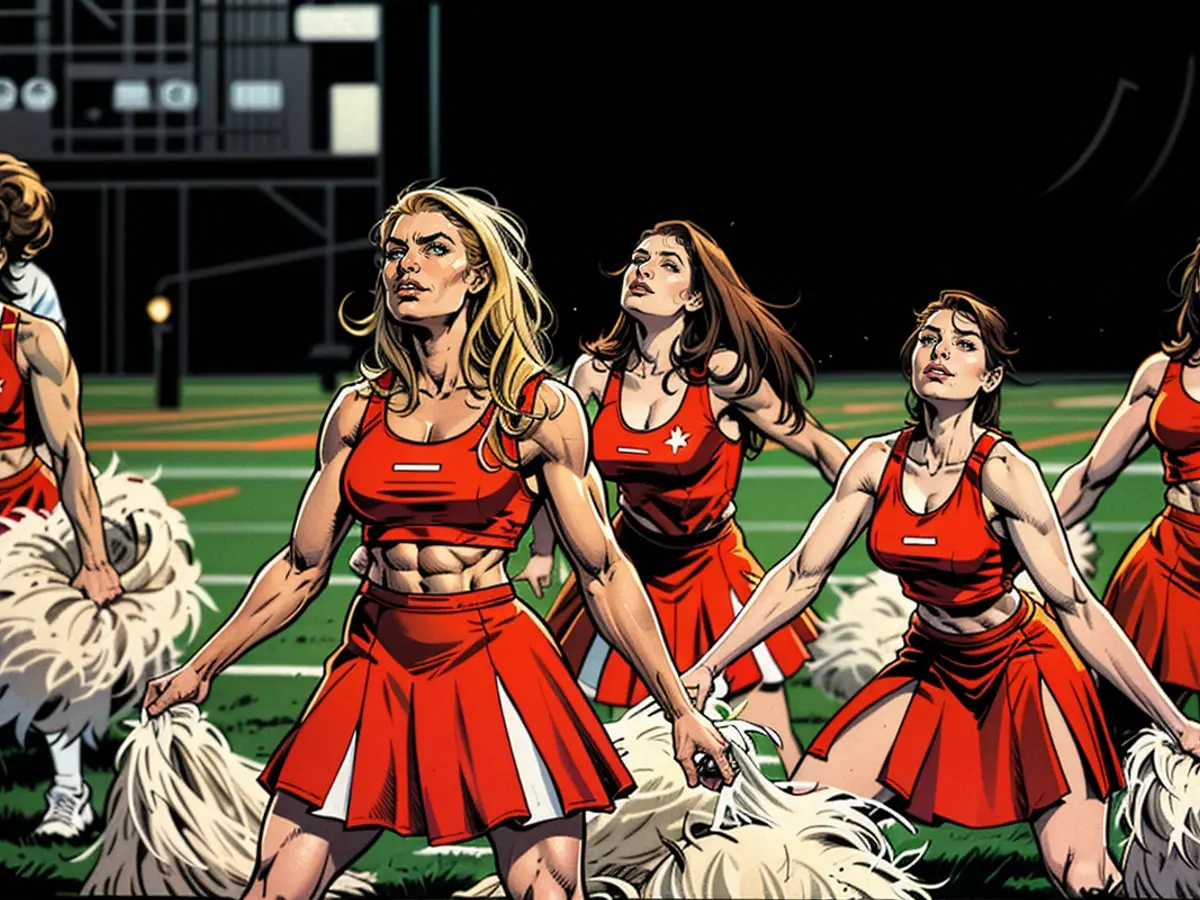
Looking back, Babbit says the criticism was a product of its time, as LGBTQ representation in popular culture was mostly limited to trauma and tragedy, heavily colored by the pain of the AIDS epidemic. It was the era of movies such as “Boys Don’t Cry,” “High Art” and “Gia” when gay or trans love was sure to end in sorrow.
Meanwhile, Babbit was trying to make what she’s called a “gay ‘Clueless.’” Writing a happy ending for two lesbians was “revolutionary,” she said. And the film was also ahead of its time for exposing the performativity of gender in an accessible way.
For Babbit, a woman who had realized young that she was a lesbian but didn’t fit the stereotypes she was familiar with, “Cheerleader” was all too personal.
“I realized from a young age that gender constructs were pointless in your sexuality. They don’t really go together,” she said. “I hadn’t seen it discussed in film, but I was living it. So I was just being honest about where I was at with that whole idea.”
Hyper-colorful delirium
Building out the world of “Cheerleader” may have been a joy for the filmmaking team, but it was also exhausting, they recalled, as their ambitious plans required far more resources than they had on hand.
“We had like, absolutely no money and no help,” Friedberg recalled. Costumes were made (or remade) in her living room, whether dyeing thrift finds for Megan’s early wardrobe or sewing strips of color into the rainbow pajamas worn in film’s refuge for gay teens who have left True Directions.
Finding the Victorian house in Palmdale, California, that served as the conversion camp, happened by chance, as Babbit passed it by in the car with her producer and then-girlfriend. The owner agreed to let them film because he could no longer keep the home, Babbit recalled, and said they could do whatever they wanted on the first floor as long as he and his family could remain upstairs — the girls’ shared candy-colored bedroom at True Directions was actually the garage. Babbit also hired the man to repaint the house with its magenta pink detailing for the film, she said.
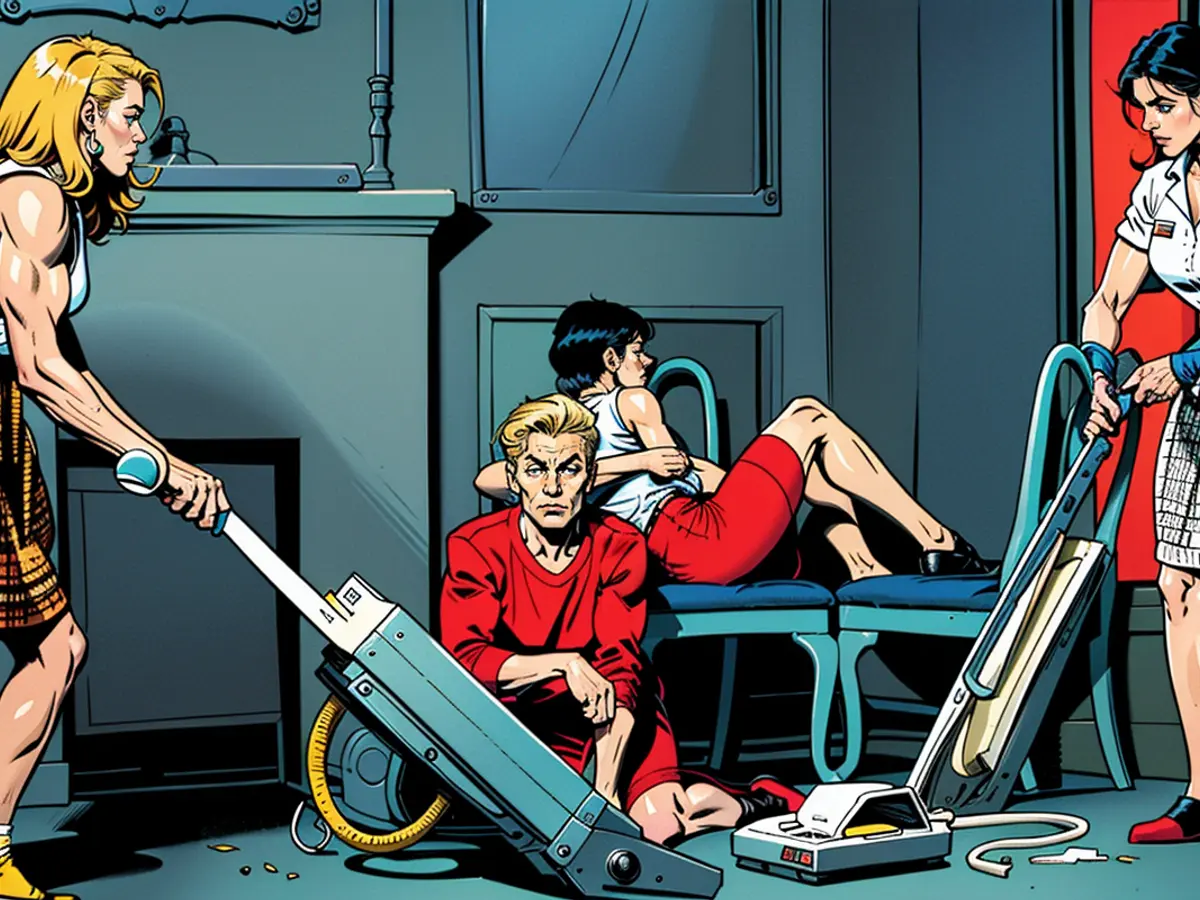

Like the house, nearly all of the locations were real sites, except for soundstages Kamerman designed for two of the film’s most stylized scenes: a color-coded montage in rooms of purple, teal and pink where the girls perform domestic tasks of womanhood and the program’s final test, which sees group members act out a surrealist simulation of married life in order to graduate.
Filming the domestic montage — during which Megan and Graham (DuVall) begin to fall in love — did not go to plan, though, Kamerman recalled, and they had to abandon a final shot that would pull back the curtain and show the constructed nature of the scenes.
“We were (setting up) to do a big exterior wide shot to show how artificial it was... and then we had a huge windstorm that day, so the whole sequence blew down,” she said with a laugh. “I think it was also when we had high fevers — there was something going around. Everybody was so exhausted; it was delirium.”
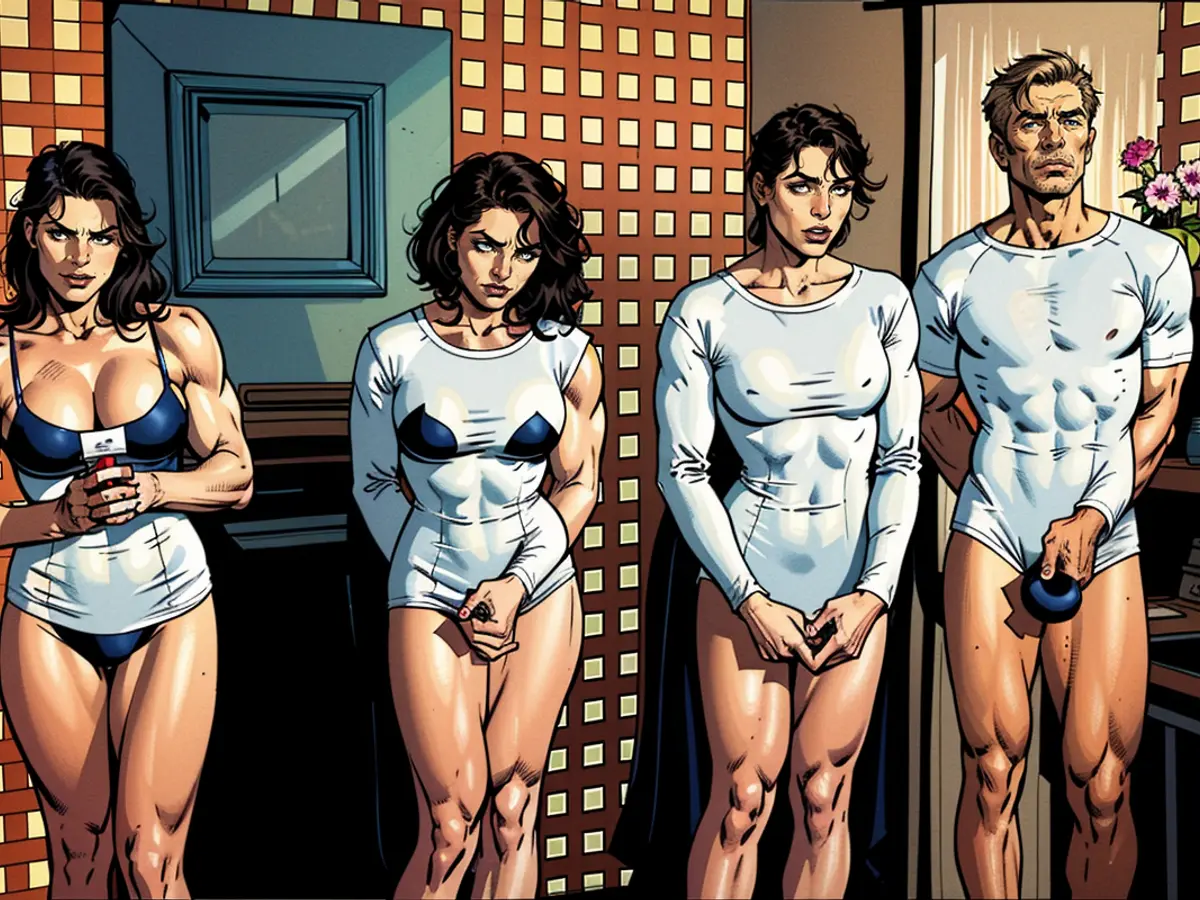
The simulation scene was similarly delirious — intentionally, this time — as True Directions members tried to pass their final test and graduate as “happy heterosexuals.” To do so, they were paired up in hetero couplings to imitate sex, while wearing nude full-body leotards with Adam and Eve-esque leaves stitched over their genitals, courtesy of Friedberg. The scene, set against bright yellow and pink gingham walls with blue trim and rose decor, was meant to be discordant and over-the-top, influenced by the provocative and often allegorical visuals of the photographer and director David LaChapelle. Kamerman found an erotic circular bed and dressed it up in hot pink to clash with the prudish, Biblical costumes.
“That round bed felt like the most heightened sexual porno bed,” she recalled. “That was an amazing find.”
“Everything we did in those tableaus speaks to our youth and naivete and our ability to have so much freedom as young artists coming up in the business,” Friedberg added. “We weren’t worrying, ‘Is this too far?’”
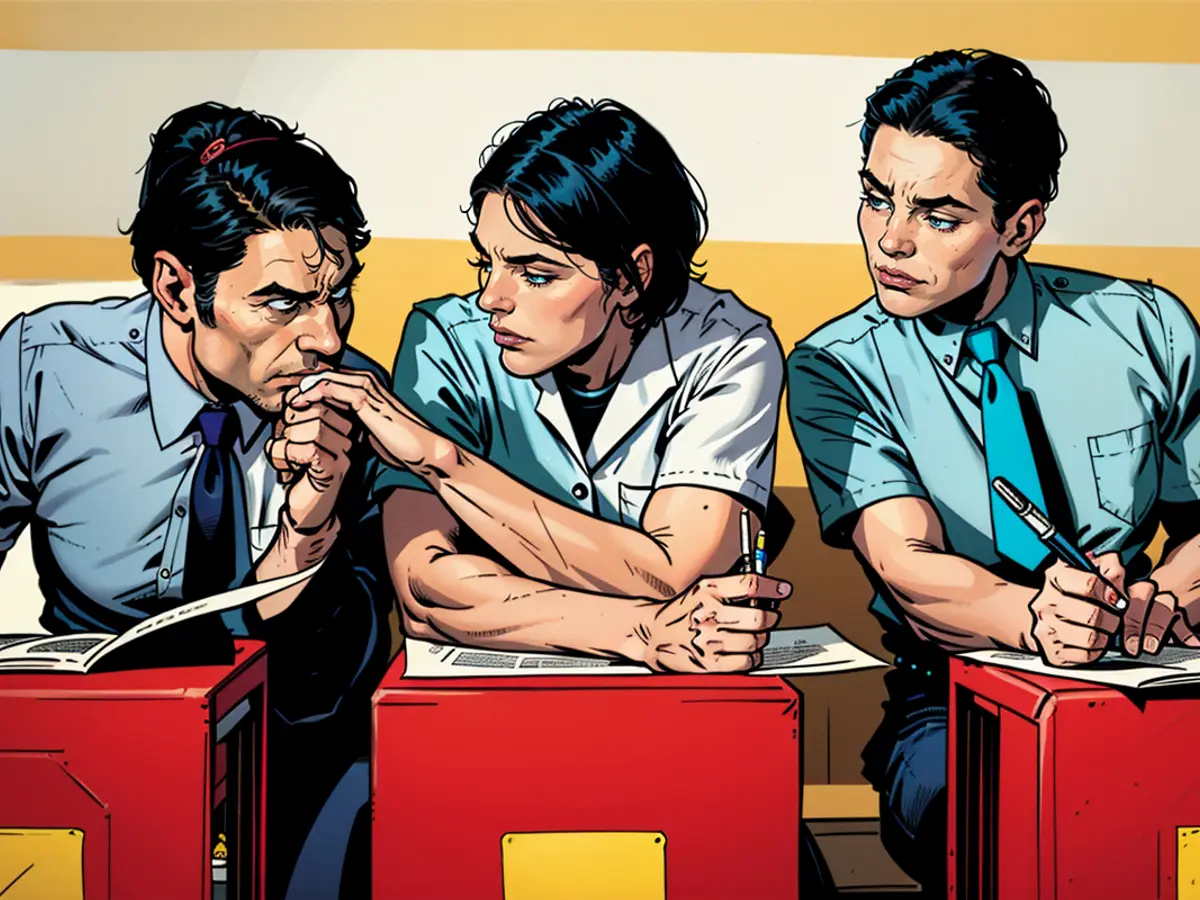
In fact, the only time that Babbit recalls reining in it was in a scene where Megan leaves True Directions and is greeted warmly in the rainbow-colored home of two “ex-ex-gays” who went through the program, only to rebel and create an “underground homo railroad” for current students. Initially, they greeted her with a platter of sex toys, Babbit said.
“A lot of gay people on set were like, ‘I don’t know, Jamie — you’ve gone too far here... she’s really getting plastic d***s the moment she comes out?” Babbit recalled.
Still, “Cheerleader” feels tame today for its R rating, with only a few allusions to actual sex, such as an artful scene of intimacy between Megan and Graham to the heartstring-tugging song “Glass Vase Cello Case” by Tattle Tale. Despite that, it nearly received an NC-17 rating, which would have severely limited its theater run, due to dialogue about oral sex and a brief masturbation scene that Babbit was forced to edit, she said. As raunchy teen romcoms hit box offices in droves, the director felt that “Cheerleader” was being dealt an unfair hand — particularly as the infamous apple pie scene in “American Pie” had skirted through with a R-rating (though the movie did also reportedly require cuts).
Despite the film’s barriers, Babbit, Friedberg and Kamerman are all pleased with its longevity, particularly as they’ve seen it gain cachet with an entirely new generation this past decade. “Cheerleader” has stood on its own as a riotous cult LGBTQ film — and one that keeps revealing more through each rewatch through the meticulous (and often ridiculous) details of its set design and costuming.
Babbit will always look back on her debut fondly. “We were just making our weirdo indie film of queer joy and female power in a vacuum.”
The visuals of "Cheerleader" were heavily influenced by the retro fantasy of Tim Burton's "Edward Scissorhands" and the outlandish camp of John Waters, with director Jamie Babbit collaborating with costume designer Alix Friedberg and production designer Rachel Kamerman to bring the hyper-colorful world to life. This style was evident in the pink-painted Victorian home that housed True Directions, the shimmering bubblegum pink dresses and neon blue suits worn by the group at their "straight" graduation, and the color palette that shifted from neutral to color-blocked to rainbow as Megan embraced her sexuality.
